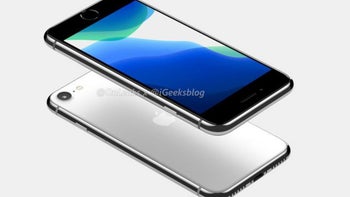The Apple iPhone 9 and the 5G iPhone 12 family face serious delays says analyst

Perhaps the most important part in the process of manufacturing the Apple iPhone is the company's supply chain. If there is a bottleneck along the supply chain, production slows down as the companies entrusted by Apple to assemble the iPhone cannot receive enough parts to do their job. The coronavirus has disrupted Apple's supply chain since most of the parts that the company sources for its smartphone come from China.
- iPhone 13: price, release date, features, and specs
In the worst case scenario, both the iPhone 9 and the iPhone 12 series could be delayed by months
Bloomberg reports that Wedbush analyst Daniel Ives is telling clients that it will take at least a full month for the companies that supply Apple to return to full capacity. Ives' note to Wedbush customers states that even if things work out perfectly for Apple, its supply chain won't be at 100% capacity until April at the earliest. So what does Ives consider to be the worst case scenario? It isn't pretty, but he says that the problems with the coronavirus could cause Apple's supply chain to produce at a reduced level through June; under those circumstances, the analyst says that Apple could be forced to delay its traditional September iPhone introduction by months (more on that later).

Render of the Apple iPhone 12 Pro Max
The problem is that Apple is reportedly making some big changes with its 2020 phones which could be Apple's first handsets to support 5G. The last thing that the manufacturer wants is a delay in announcing its first 5G phones. Additionally, reliable TF International analyst Ming-Chi Kuo says that four phones will make up the 2020 iPhone lineup: the 5.4-inch iPhone 12, the 6.1-inch iPhone 12 Plus, the 6.1-inch iPhone 12 Pro and the 6.7-inch iPhone 12 Pro Max. All four will connect with both sub-6GHz and mmWave 5G signals. And Apple is expected to add a Time of Flight (ToF) sensor to the iPhone 12 Pro models. The design of the 2020 phones will include a metal strip on the top and sides of the handset similar to the design of the iPhone 4 (hopefully no rubber bumpers will be needed).
But before that happens, Apple will need its supply chain humming in order to produce the iPhone 9/iPhone SE2. The entry-level model will look like the iPhone 8 from the outside but will be powered by the same A13 Bionic powerhouse chip that drives the 2019 iPhone 11 series. The memory will be hiked by 50% to 3GB and the device should carry a 4.7-inch LCD screen and the Touch ID fingerprint sensor. Kuo, the aforementioned analyst, originally expected Apple to sell between 30 million and 40 million units of this model this year but has dropped that figure to a range of 20 million to 30 million. Even at that lower range, the tech giant cannot afford to have an issue with its supply chain especially with five new iPhone models supposedly in the cards for 2020.
To reiterate, UBS analyst Ives says that if Apple's supply chain can return to normal by April, the iPhone 9 might be the only casualty in terms of a delayed launch. The phone is supposed to be unveiled on March 31st. In this scenario, the 5G iPhone models will be introduced on time in September. If the company still is having issues with obtaining supplies by June, both the iPhone 9 and the 5G models could be delayed by months.
The analyst expects normalization to return to Apple's supply chain by late April or early May which he believes will push back the iPhone 9 by a couple of months and delay the iPhone 12 series by a few weeks. Knowing Apple, we would imagine that this would be totally unacceptable to them and the company would do everything it could to keep its original roadmap intact. Apple, though, might end up with no choice in the matter as it will all depend on whether the spread of the coronavirus begins to slow down.










Things that are NOT allowed: